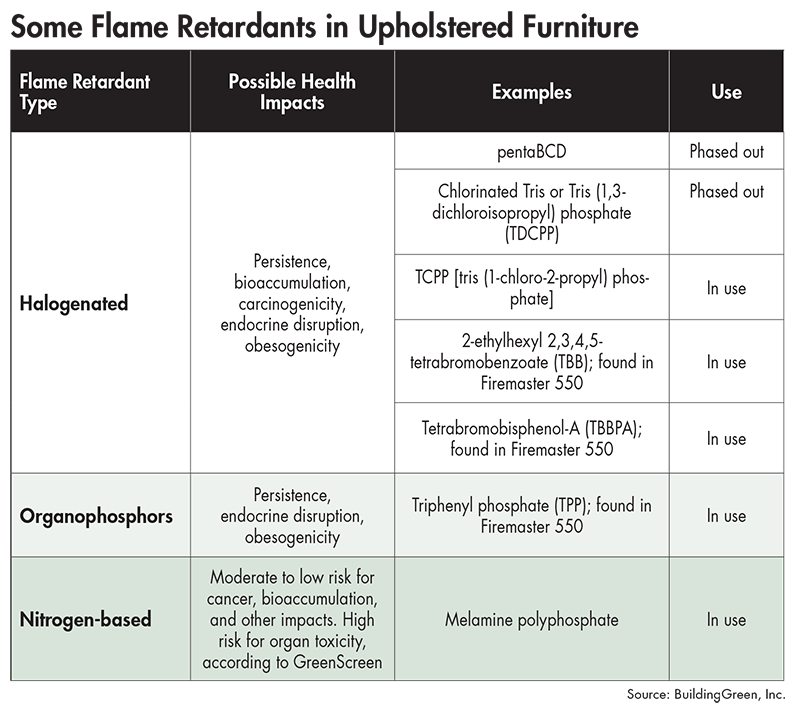Jun 01 2021 Heraldkeepers -- Flame retardant chemicals are. Building materials were dominated by HBCDDs and BDE-209.
Toxic Chemicals In Everyday Life Environmental Audit Committee House Of Commons
It can break down into smaller halogenated byproducts that may be harmful.

Halogenated flame retardants building materials. Applied to materials in order to slow or prevent the start or growth of fire. 16 hours agoThe Global Non-Halogenated Flame Retardant Chemicals Market Size Global Trends Growth Opportunities Market Share and Market Forecast 2021 2028 is a comprehensive and detailed report published by Zeal InsiderThe report provides all the latest details regarding impact of covid-19 on the market and its comparison with pre covid-19 situation. A36 Window and waterproofing membranes door and window frames and siding.
FRs are chemicals added to building materials to prevent fires from starting or limit their spread providing precious seconds for building occupants to escape and for firefighters to contain the blaze. Polymeric flame retardants contain repeated subunits which may include halogens and phosphates PolyFR Emerald Innovation 3000 GreenCrest BLUEDGE This large copolymer of brominated styrene and butadiene is commonly used in foam plastic building insulation. Organohalogen flame retardants are used to protect many different types of plastics and textiles.
252a USGBCs LEED v3 Pilot Credit 54 requires that third party certified building products not contain more than 001 by mass 100ppm brominated or halogenated flame retardants containing bromine chlorine or fluorine. Where are flame retardants used. The use of these insulation materials polystyrene polyurethane and polyisocyanurate is increasing as buildings become better insulated and more energy efficient.
The most common flame retardants in foam plastic insulation are hexabromocyclododecane HBCD. And industrial products since the 1970s to decrease the ability of materials to ignite. How Do Flame Retardants Work.
Also other industries like building and construction and transportation are moving away from these halogenated FR additives. USGBCs LEED v3 Pilot Credit 54 requires that third party certified building materials may not include perfluorinated compounds at levels equal to or greater than 100 ppm. The total concentrations of analyzed FRs ranged from 119 ngg diatomite powder to 9532 ngg expanded polystyrene panel.
Flame retardants can come into direct contact with building occupants. Wood treatments containing creosote arsenic or pentachlorophenol. In this study polybrominated diphenyl ethers PBDEs novel brominated flame retardants NBFRs and dechlorane plus DPs were analyzed in seven categories of building and decoration materials.
Halogenated flame retardants HFRs are used in building materials such as surface finishes and coatings. To fulfill national and international fire safety standards flame retardants FRs are being added to a wide range of consumer products and building materials consisting of flammable materials like plastic wood and textiles. The concentrations of HBCDDs far exceeded the levels in household plastics Groups 1C and 1D and the only other non-recycled materials with comparable levels of HBCDDs were four carpet samples from the floor covering group 1B which could also be considered to overlap with the building material.
Halogenated flame retardants HFRs Hydrochlorofluorocarbons HCFCs Lead added Mercury. Electronic device manufacturers have instituted voluntary bans on plastic formulations with halogen-containing FR additives. While the FR composition of some products and materials has been identified in recent years the limited global coverage of the data and the large diversity in consumer products.
Halogenated flame retardants are limited in the following components to 001 100 ppm to the extent allowable by local code. Our specifications have the power to drive market change for safer materials. B36 Flooring ceiling tiles and wall coverings.
Flame retardants have been used in many consumer. Volatile organic compounds VOCs in wet applied products. No other flame retardants had any significant levels.
The MarketWatch News Department was not involved in the creation of this content. Flame retardants are chemicals that are added or. Short Chain Chlorinated paraffins.
The applications flame retardant function. Textile Flame RetardantsMarket is expected to rise at annual rate 400 in the forecast period of 2021 to 2028 due to the increasing application of the product in the end user industries On the other hand the penetration of alternatives and organic fabrics and implementation of regulations restricting the usage of halogenated flame retardants and the volatile raw material prices are. People are exposed to the flame retardants used in such insulation primarily as a result of.
What are flame retardants. Also referred to as HALOGENATED FLAME RETARDANTS organohalogen flame retardants are a diverse class of substances that are characterized by having at least one carbon atom bound to a halogen atom most commonly chlorine or bromine.
Classification Of Fire Retardant Chemical Types Download Table
January 2021 Flame Retardancy Of Polymers
Traditional And Novel Halogenated Flame Retardants In Urban Ambient Air Gas Particle Partitioning Size Distribution And Health Implications Sciencedirect
Flame Retardants Under Fire Buildinggreen
Flame Retardants Under Fire Buildinggreen
Global Flame Retardant Market Size Share Report 2020 2027
Update On The Regulatory Status Of Flame Retardants Coatings World
Finding Furniture Without Toxic Flame Retardants Buildinggreen
Non Halogenated Flame Retardant Market Size Trends Shares Insights Forecast Coherent Market Insights
Flame Retardants Under Fire Buildinggreen
Cellmat Technologies Technical Consultancy In Halogen Free Flame Retardancy
Halogenated Flame Retardants In Building And Decoration Materials In China Implications For Human Exposure Via Inhalation And Dust Ingestion Sciencedirect
Halogen Free Flame Retardant Market Global Forecast To 2025 Marketsandmarkets
Global Flame Retardant Market Size Share Report 2020 2027
Global Halogen Free Flame Retardant Chemicals Market Projected To Reach 2 234 4 Thousand Metric Tons By 2021 Technavio Business Wire
Halogen Free Flame Retardant Market Global Forecast To 2025 Marketsandmarkets
Materials Free Full Text Recent Developments In Halogen Free Flame Retardants For Epoxy Resins For Electrical And Electronic Applications Html
Komentar
Posting Komentar